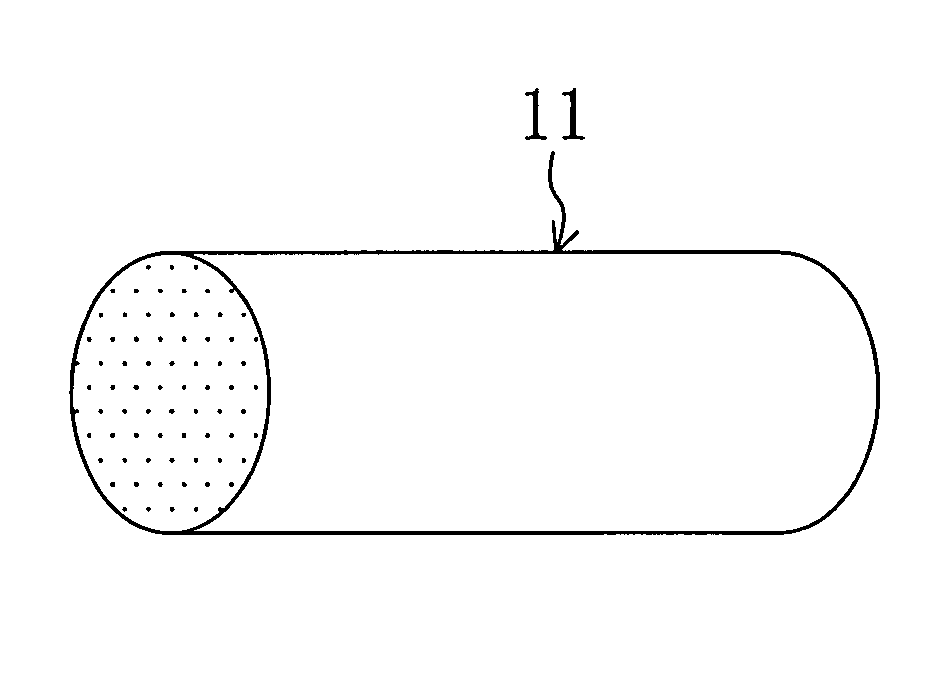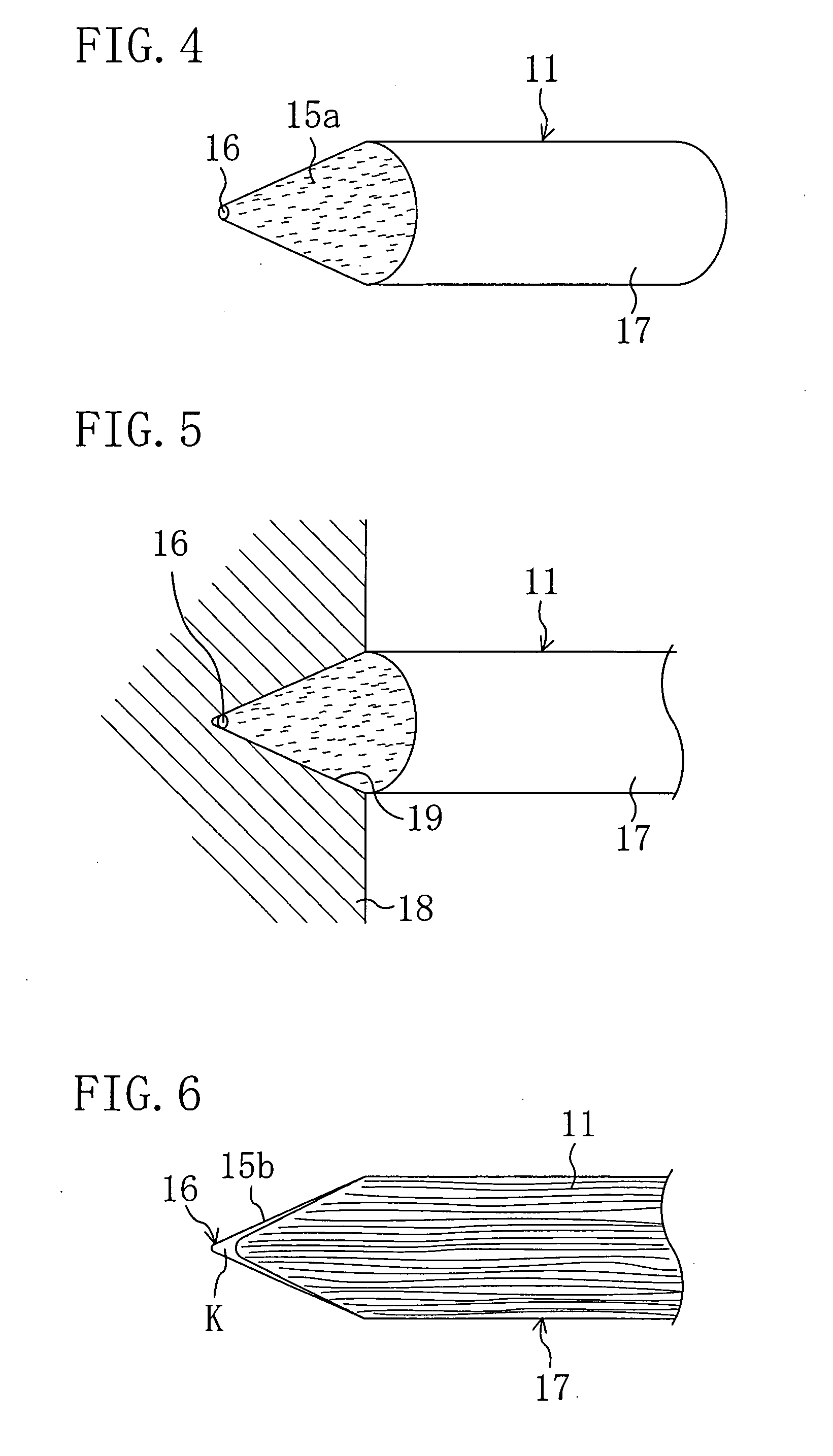Body Cavity Sealing Member, Method For Manufacturing The Same, And Corpse Treatment Device
a body cavity and sealing member technology, applied in the field of body cavity sealing members, can solve the problems of large amount of body fluids in the vaginal cavity, leakage of internal waste materials, and waste materials in the body cavity, and achieve the effect of preventing leakag
- Summary
- Abstract
- Description
- Claims
- Application Information
AI Technical Summary
Benefits of technology
Problems solved by technology
Method used
Image
Examples
first embodiment
[0055] As shown in FIG. 1, a body cavity sealing member 10 is formed of a columnar superabsorbent, porous fiber molded object 11 having one end part tapered toward its distal end. The fiber molded object 11 is a porous molded object obtained by bundling water-swellable fibers 12 of cross section shown in FIG. 2 into a columnar shape. The fiber molded object 11 employs as superabsorbent fibers 12 a superabsorbent, porous fiber molded object (trade name: LANSEAL®F manufactured by Toyobo Co., Ltd.) that expands up to 2.5 or more times its diameter by absorbing water. The water-swellable fiber 12 is a porous fiber of double-layer structure that has an inner layer 12a made of an acrylic fiber serving as a core and a superabsorbent outer layer 12b placed to surround the inner layer 12a and processed to swell after absorbing water. The prepared molded object 11 has a diameter of 22 mm and a length of 80 mm.
[0056] FIGS. 3 to 5 show process steps for forming one end part of the body cavity ...
PUM
 Login to View More
Login to View More Abstract
Description
Claims
Application Information
 Login to View More
Login to View More - R&D
- Intellectual Property
- Life Sciences
- Materials
- Tech Scout
- Unparalleled Data Quality
- Higher Quality Content
- 60% Fewer Hallucinations
Browse by: Latest US Patents, China's latest patents, Technical Efficacy Thesaurus, Application Domain, Technology Topic, Popular Technical Reports.
© 2025 PatSnap. All rights reserved.Legal|Privacy policy|Modern Slavery Act Transparency Statement|Sitemap|About US| Contact US: help@patsnap.com



